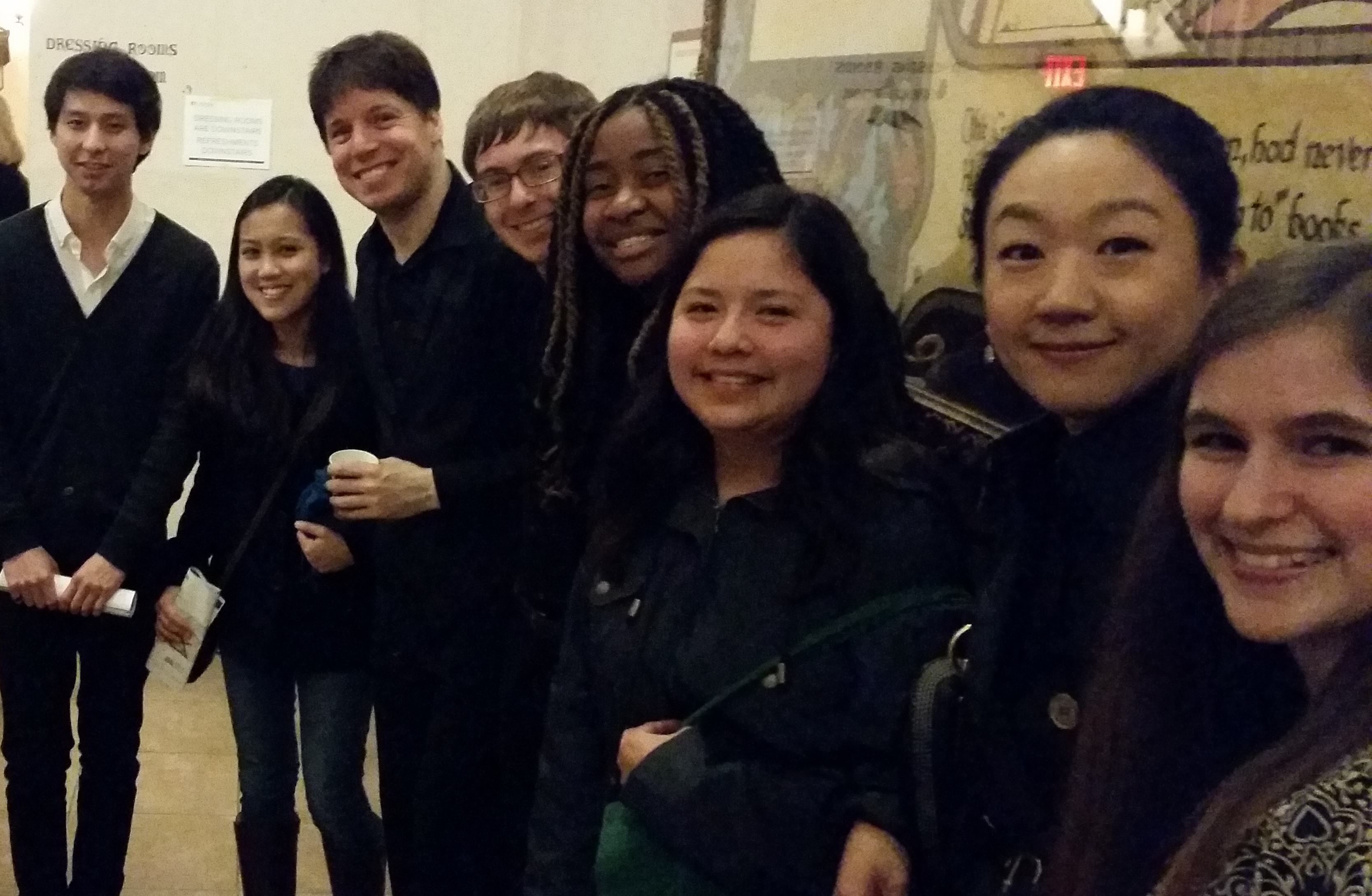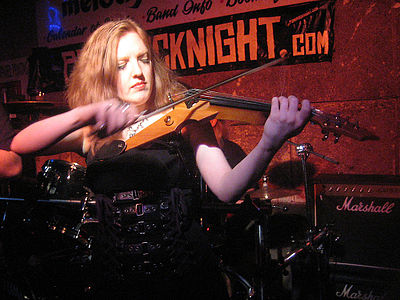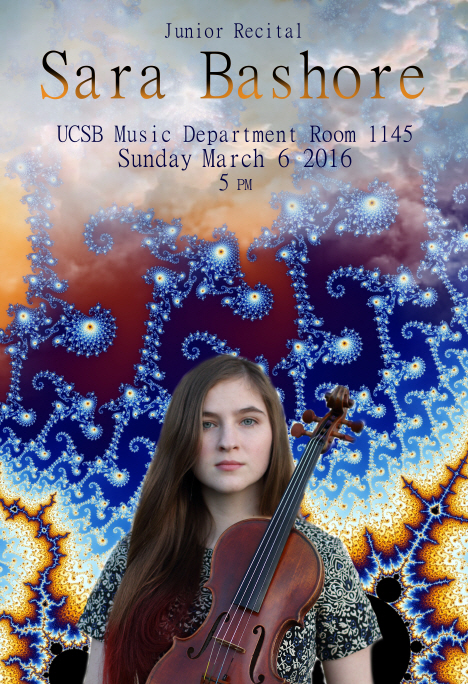Program notes from my Senior Recital

Wolfgang Amadeus Mozart (1756- 1791)
Violin Concerto No. 3 in G Major
The Violin Concerto No. 3 in G Major was the third of five violin concertos composed by Mozart in 1775 while living in Salzburg. He was only nineteen when he wrote them, already midway through his short life of 35 years. He had just returned from an extensive visit to Munich where he had been looking for work at higher wages than the 150 florins annual salary he was receiving for his work in Salzburg. Perhaps he was adding to his resume after failing to find a better position, or perhaps he encountered inspiration for the violin concertos while traveling. Either way, the final three of the five are considered some of his greatest masterworks of his six hundred compositions legacy.
The concerto has three movements: I. Allegro, II. Adagio, and III. Rondeau – Allegro. In the first brilliant movement, orchestra and soloist joyously converse. It was speculated by John Irving in his 2010 notes for the Australian Chamber Orchestra:
It is as if a drama is unfolding on the operatic stage. And that comparison is, in fact, quite apt, because the way Mozart handles form in his concertos bears a very close resemblance indeed to the forms of his operatic arias in works from the 1770s such as Lucio Silla (1772). Seen in this light, the concertos take on a new aspect: not so much a contest between a virtuoso soloist and an orchestra, but a dramatic interaction between characters on stage; a narrative rapidly unfolding through the rhetoric of gestures, some of them painted with a broad brush but, in the main, subtle interactions rather in the manner of a conversation.
The movement dabbles in chord changes to D major, and then D minor, and others, but it resolves completely to G major in a final recapitulation.
Johann Sebastian Bach (1685 – 1750)
Sonata No. 1 in G Minor
Johann Sebastian Bach was not widely known or fully appreciated during his own lifetime. The man we revere as one of the greatest German Baroque composers was a member of a large musical family. Although orphaned at ten years old. Bach had some opportunity to travel during his youth, and was exposed to wider European musical influences. His compositions reflect this musical sophistication. He overloads every melodic voice in his pieces with companion voices, not merely harmonic, or contrapuntal, but equally developed melodies that compete with each other, an innovative style at the time.
Bach’s family members included local luminaries who served as village and church music and choir directors, and were occasionally appointed to elevated positions by minor aristocrats. Bach followed in the family business, spending most of his life as a music director and organist, at one time receiving the patronage of Prince Leopold of Anhalt-Köthen who recognized his extraordinary talent. Leopold, as a Calvinist, eschewed the extravagant use of music in worship as false idolatry, and hired Bach to compose and direct primarily secular music. It was during this time (1717 – 1723) that the Sonatas, Partitas, Brandenburg Concertos, and other orchestral works were written.
The Sonata No. 1 in G minor is in most respects a Sonata da Chiesa (a Church Sonata); a four movement composition using a traditional fast-slow, fast-slow pattern. This type of sonata would be restrained enough to be appropriate in church, although it didn’t serve any liturgical function in the Catholic mass. It would more commonly be played as entertainment in a genteel setting.
Niccolò Paganini (1782 – 1840)
Caprice No. 20 in D Major
The dictionary defines a caprice as an impulsive action, taken on a whim or as a lark. The series of twenty-four caprices written by Niccolò Paganini between 1802 and 1817 may feel as if they are random dances of the mind, but in reality they are carefully contrived exercises — études designed to address every piece of a violinist from fingertip to soul. Paganini was a virtuoso and vigorously marketed himself as such. The caprices he wrote (but never played publicly) were his gift to artists who would aspire to bring their own craft to new heights, to his level. The Caprices are so comprehensive and difficult that they are a staple of the auditions required of students applying to every Master of Music program. Moreover, they are my rite of passage. For the last ten years or more, I’ve thought that when I can master even one of the Paganini caprices, I will honestly be able to call myself a violinist.
Each of the twenty-four caprices carries its own special flavor and challenge. I chose to play number twenty in the key of D major because it is so warm and beautiful. It comprises three sections evoking a simple day in the Scottish highlands. First, a solemn salute to the rising sun, a collection of rich notes that lie against a steady drone note that produces the characteristic bagpipe sound. If you break the drone note, you break the carefully crafted illusion of a lone piper on a mist-shrouded crag. After a gentle minute of this, an entirely new theme is entered, a frenzied center section, lasting about a minute-and-a-half. It feels like a meadow dance of the fantastic wherein bees, hummingbirds and deliciously graceful fairies frolic capriciously as trills and flying staccato tumble off the bow in sixteenth notes. Finally, there is a return to the piper – standing now on the sand mourning the loss of the huge red sun that at last, slips into the sea.
Maurice Ravel (1875 – 1937)
Tzigane
Not long after composing his jazz-inspired Violin Sonata, Maurice Ravel struck up a friendship with British-Hungarian violinist Jelly d’Arányi, the inspiration for his rhapsodic Tzigane. The title itself translates to “gypsy”, and the piece certainly holds true to its name. “This Tzigane must be a piece of great virtuosity,” Ravel told the violinist. “Certain passages can produce brilliant effects, provided that it is possible to perform them — which I’m not always sure of.” The piece premiered in London on April 26, 1924, and it is rumored that d’Arányi only received the finished score a day or two before the performance. At the inaugural London performance, the music’s gypsy flavor was enhanced by the use of a piano attachment called a luthéal, a relatively new invention that had only been in use since 1919, which caused the piano to take on the sound of a Hungarian cimbalom or dulcimer.
Tzigane opens with a lengthy quasi-cadenza for the solo violin which introduces and explores several of the themes to be encountered later in the piece. The entire first page of the violin part is played on the G string; a celebration of the instrument’s oft overlooked lower register. Next, the violinist introduces a passionate, chord-laden melody that grows increasingly animated and intense. As the music gradually climbs toward the stratosphere, Tzigane demonstrates the use of several advanced virtuosic techniques. The improvisatory feeling of the music is a reminder that Ravel incorporated many of d’Arányi’s improvised embellishments into the score. From a piano cadenza, originally orchestrated for harp, emerges the dance-like main theme, which Ravel presents in a series of variations, each more impressive than the last. The piece rockets to its finish, culminating in a dazzling exhibition of virtuosic techniques.
Johan Halvorsen (1894 – 1965) George Frideric Handel (1685 – 1759)
Handel-Halvorson Passacaglia for Violin and Cello
Spaniards originated the passacaglia musical form in the early seventeenth century, but Italians are credited with its development. The portmanteau “passacaglia” translates to street walk, a cadential interlude originally used to connect disparate pieces. It evolved throughout the centuries and most academics today will agree that a passacaglia’s defining characteristics are that its chords iterate over a ground bass and that it is frequently written in triple-meter. The mathematician in me sees the passacaglia as a microcosm of our lives. What are lives but a series of days, each much like the day before, yet each holding a variation? We live cycles as infant, scholar, parent, and elder. We grow in wisdom; cultivating social, emotional, and intellectual expression all on the ever-circling canvas that is the days of our lives.
George Frideric Handel wrote his Harpsichord Suite in G minor in 1720. He used sixteen variations over a ground baseline in his sixth movement, a passacaglia that I can only describe as relentless. Is the Handel-Halvorson Passacaglia for Violin and Cello merely an arrangement of Handel’s work? I don’t think so. I believe it has been extrapolated to the point that it stands alone on its own merit. It’s almost as if Halvorsen were a modern artist sampling the content of another artist. Halvorsen’s work uses tempo changes to destroy the “relentless” characteristic of Handel, adding emotional color and artistry. Where one could almost describe Handel’s work as pounding algorithmically on keys, Halvorsen introduces extended techniques that were not available in Handel’s time: Saltando, ponticello, artificial harmonics, and more. While Halvorsen certainly owes an unpayable debt to Handel, his Passacaglia for Violin and Cello is a unique modern work, using an entirely different and more sophisticated toolset than Handel could have dreamed of two hundred years earlier
Views: 6644






